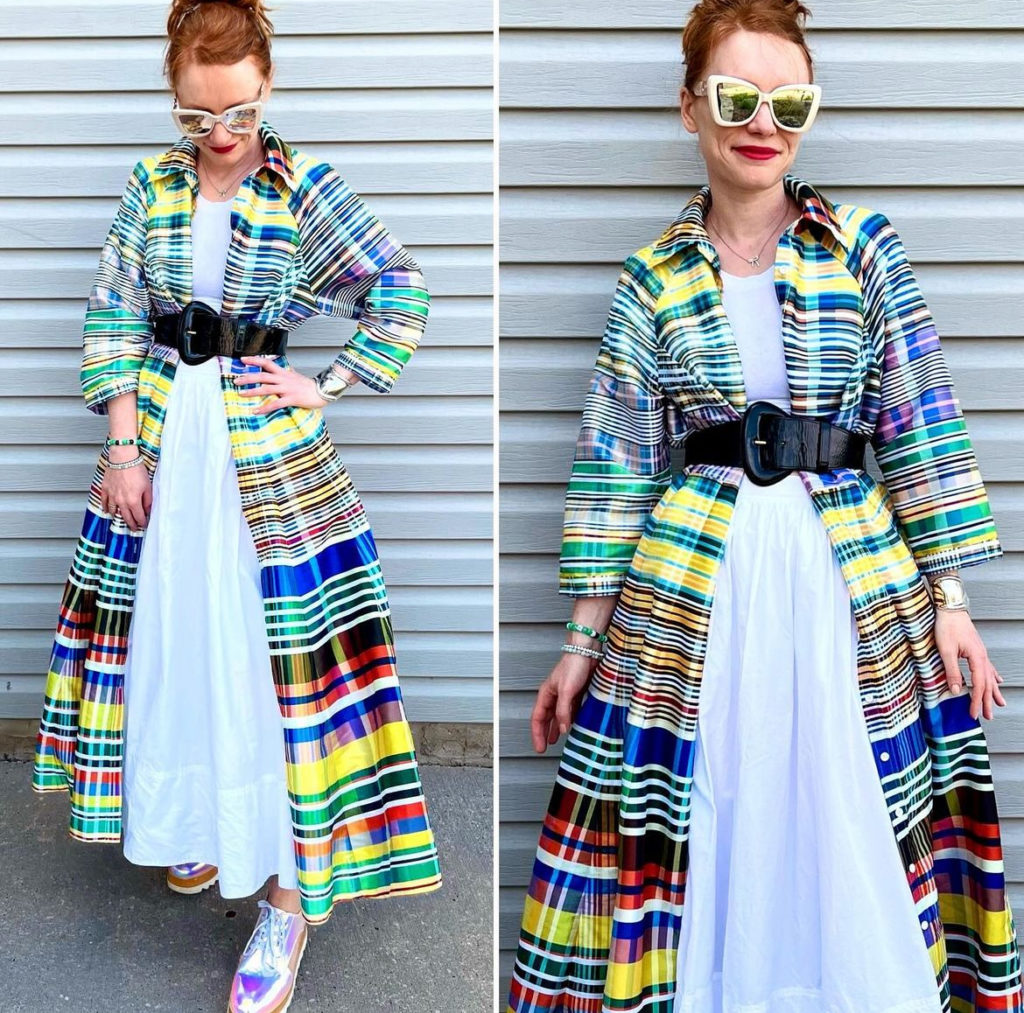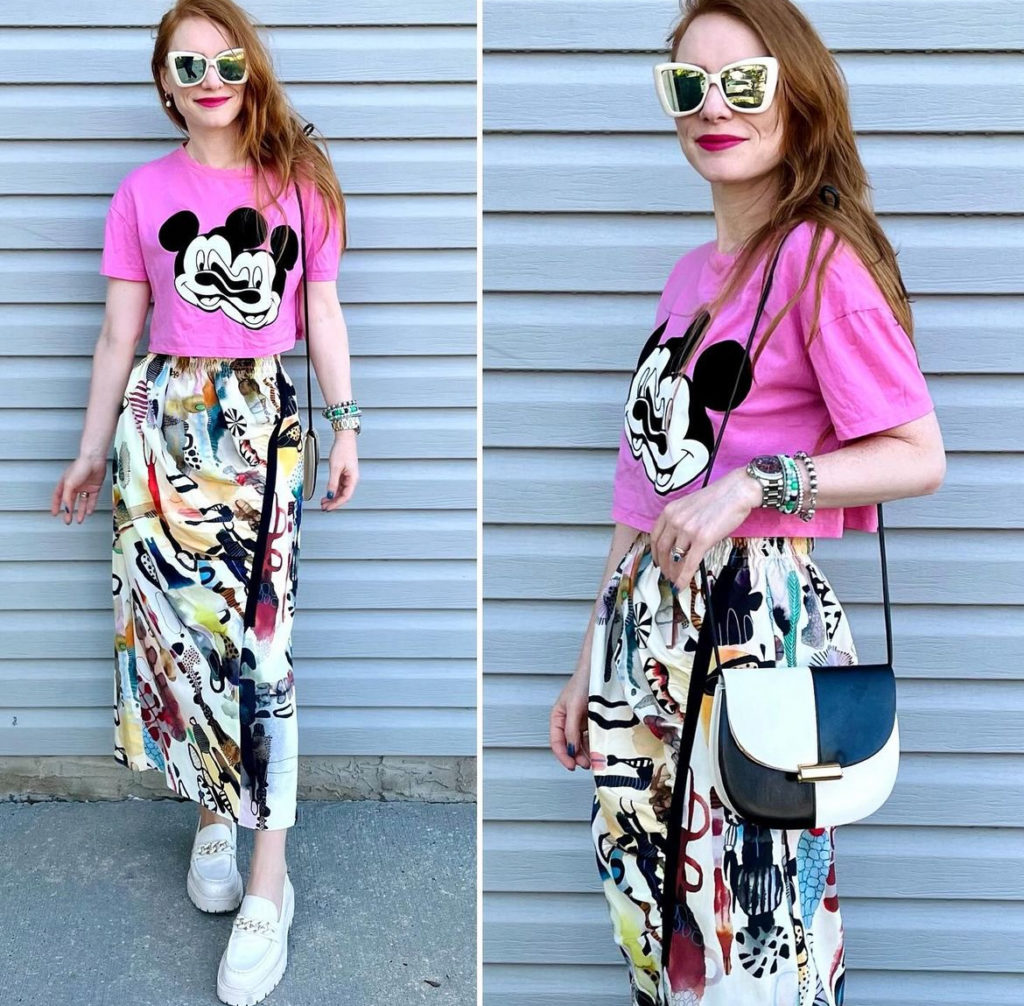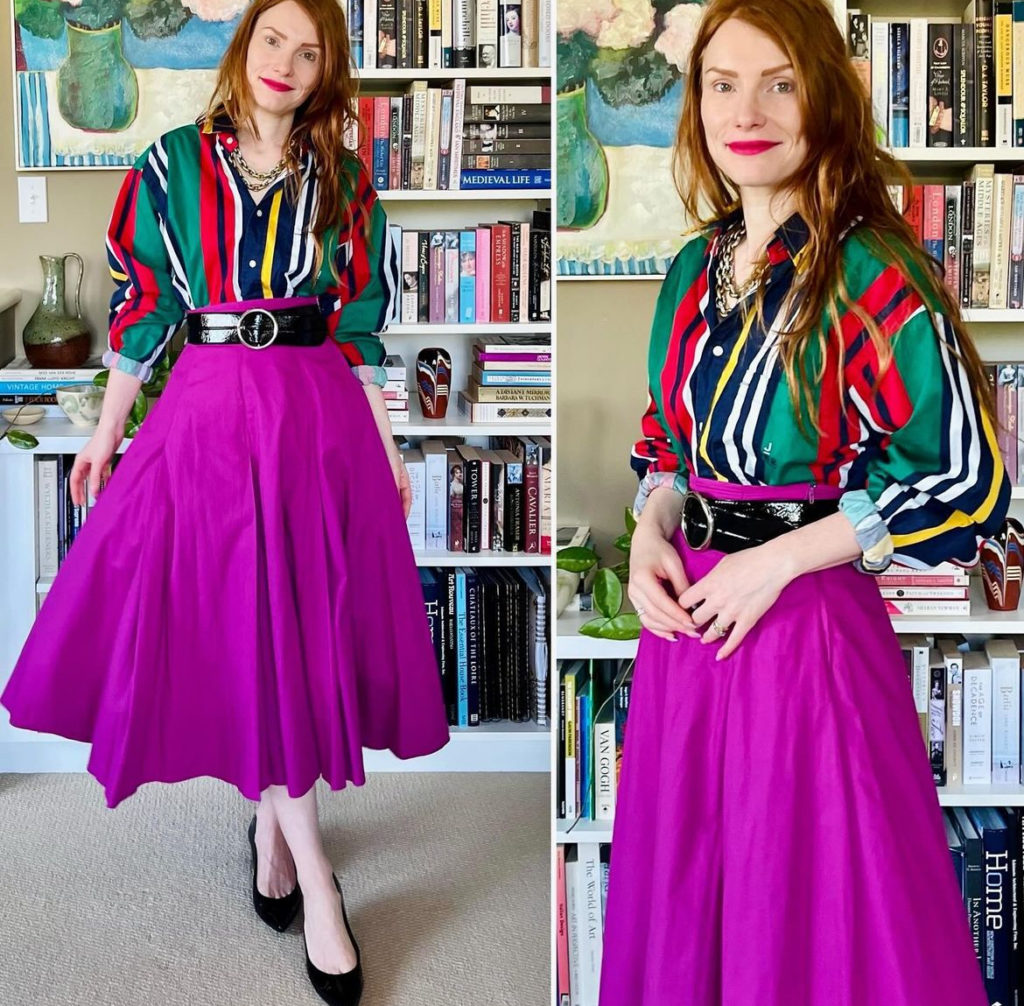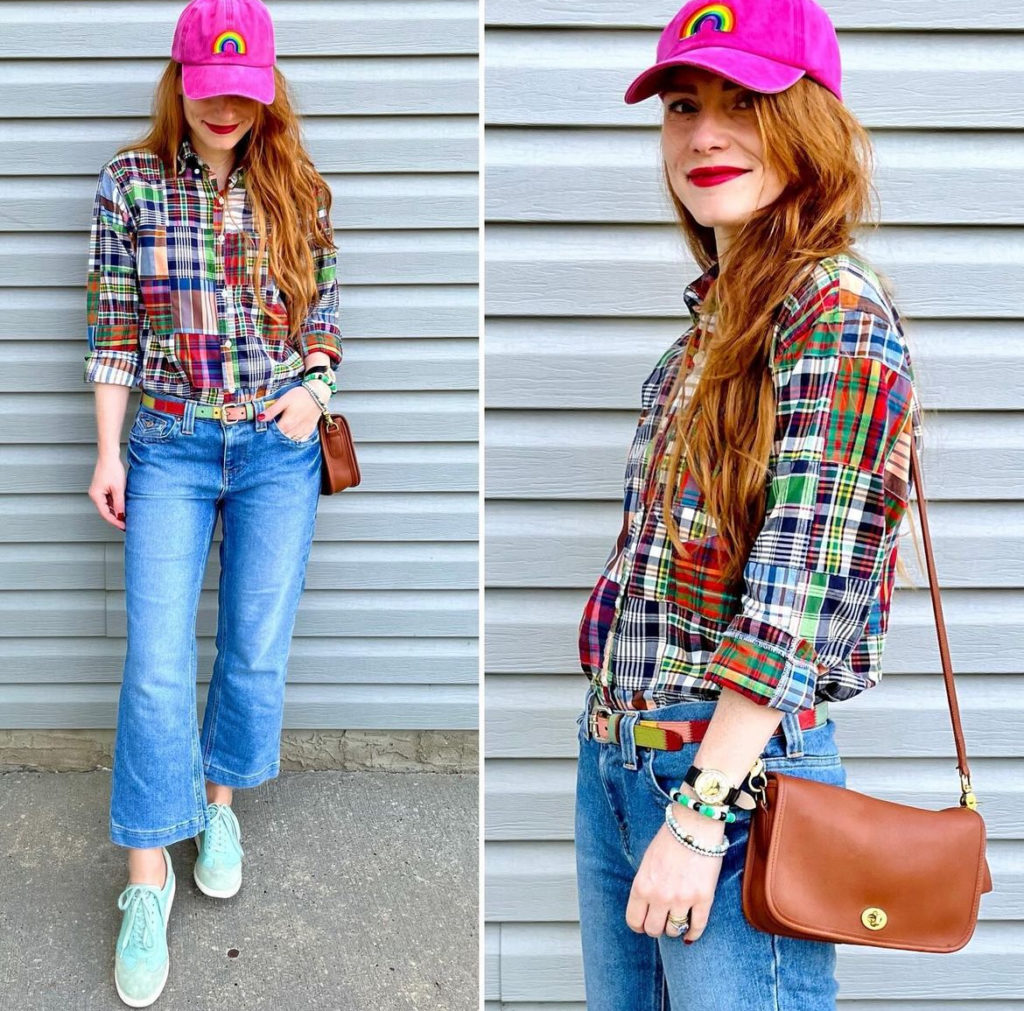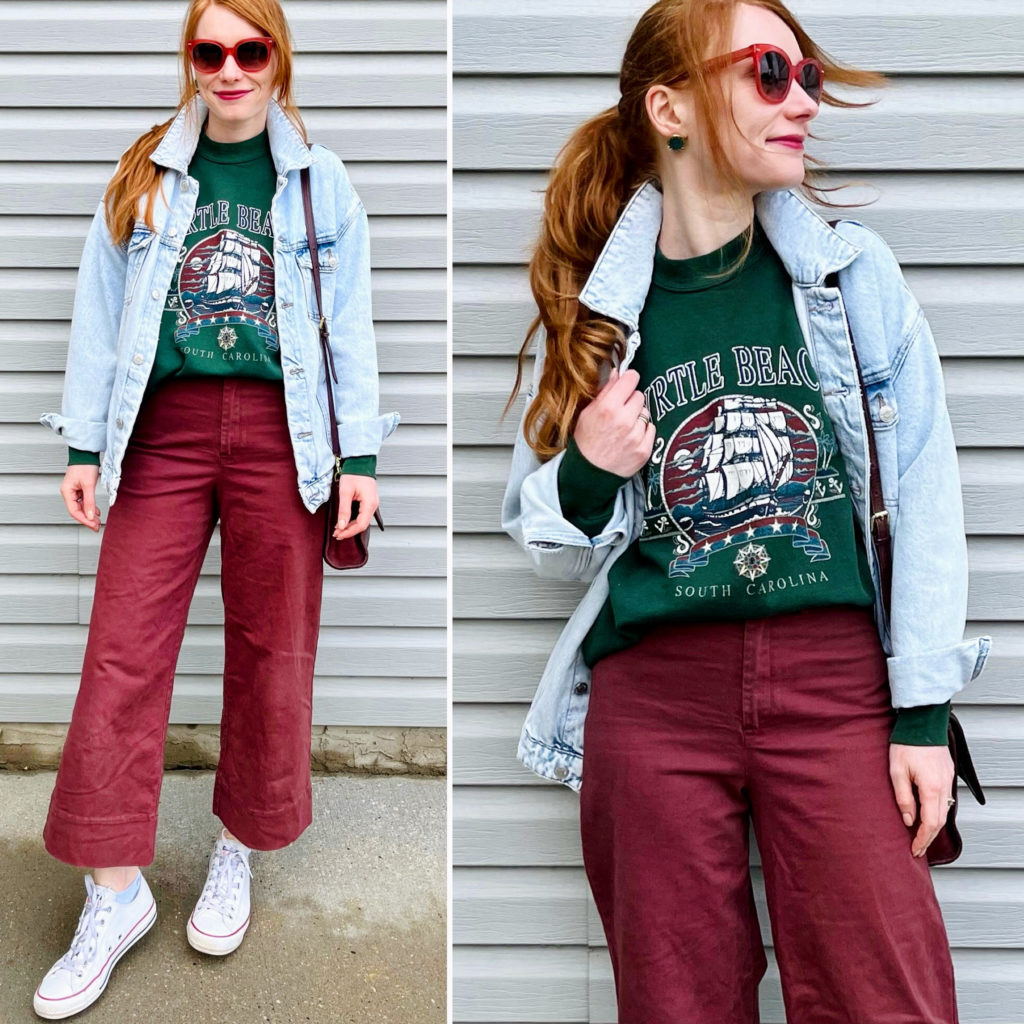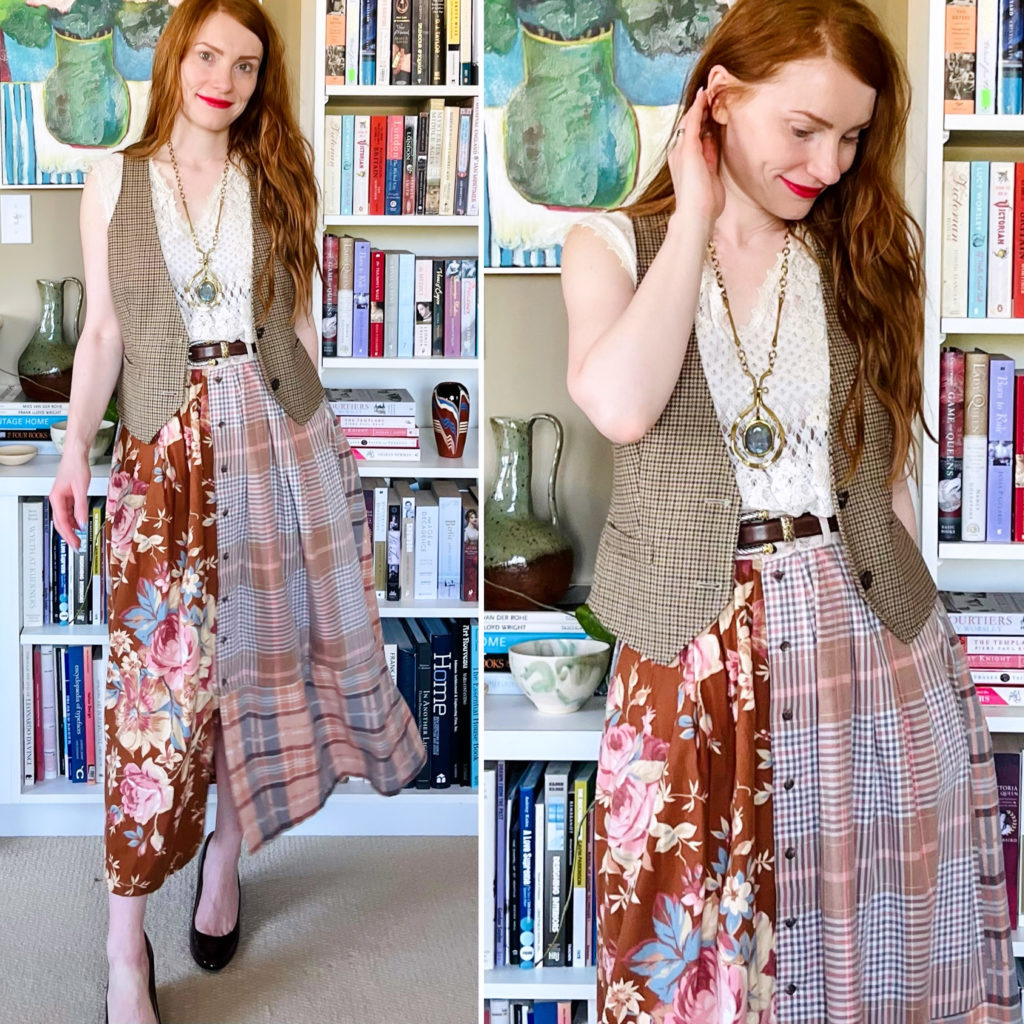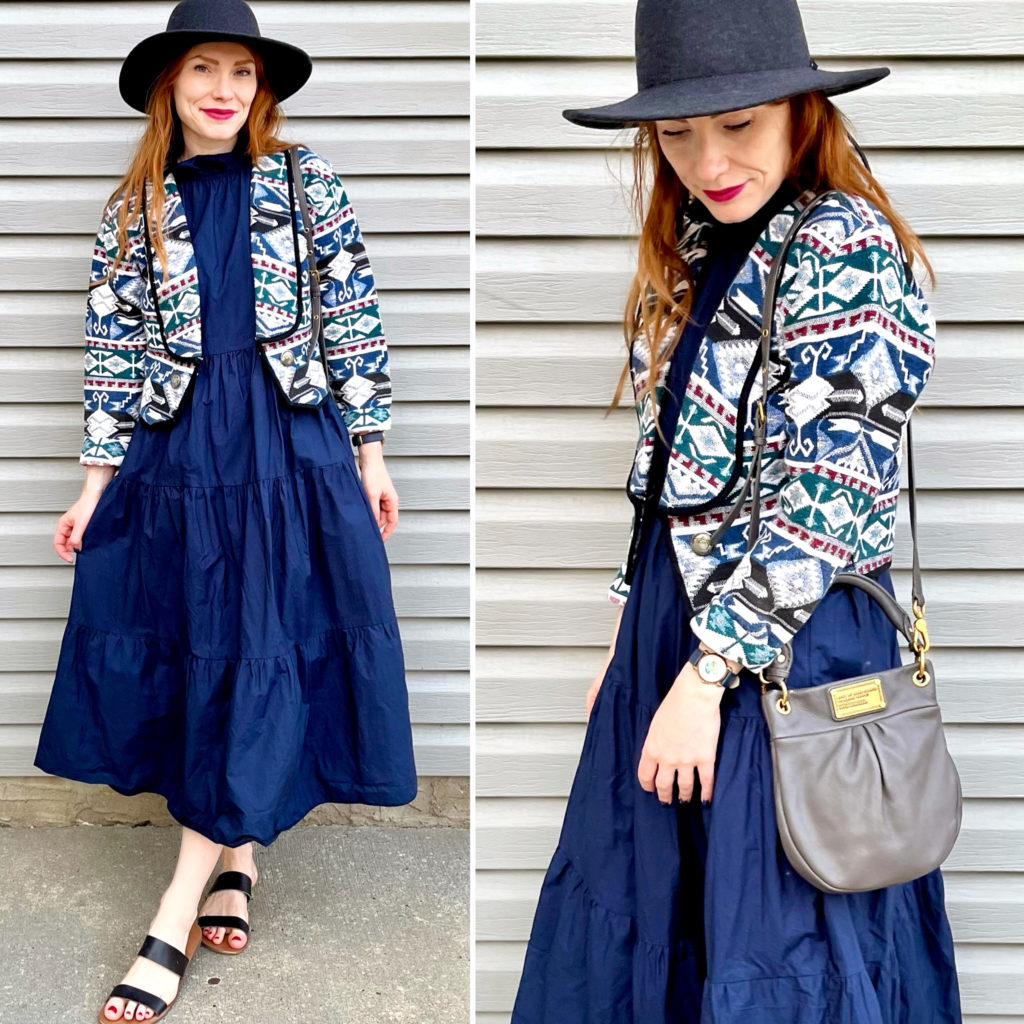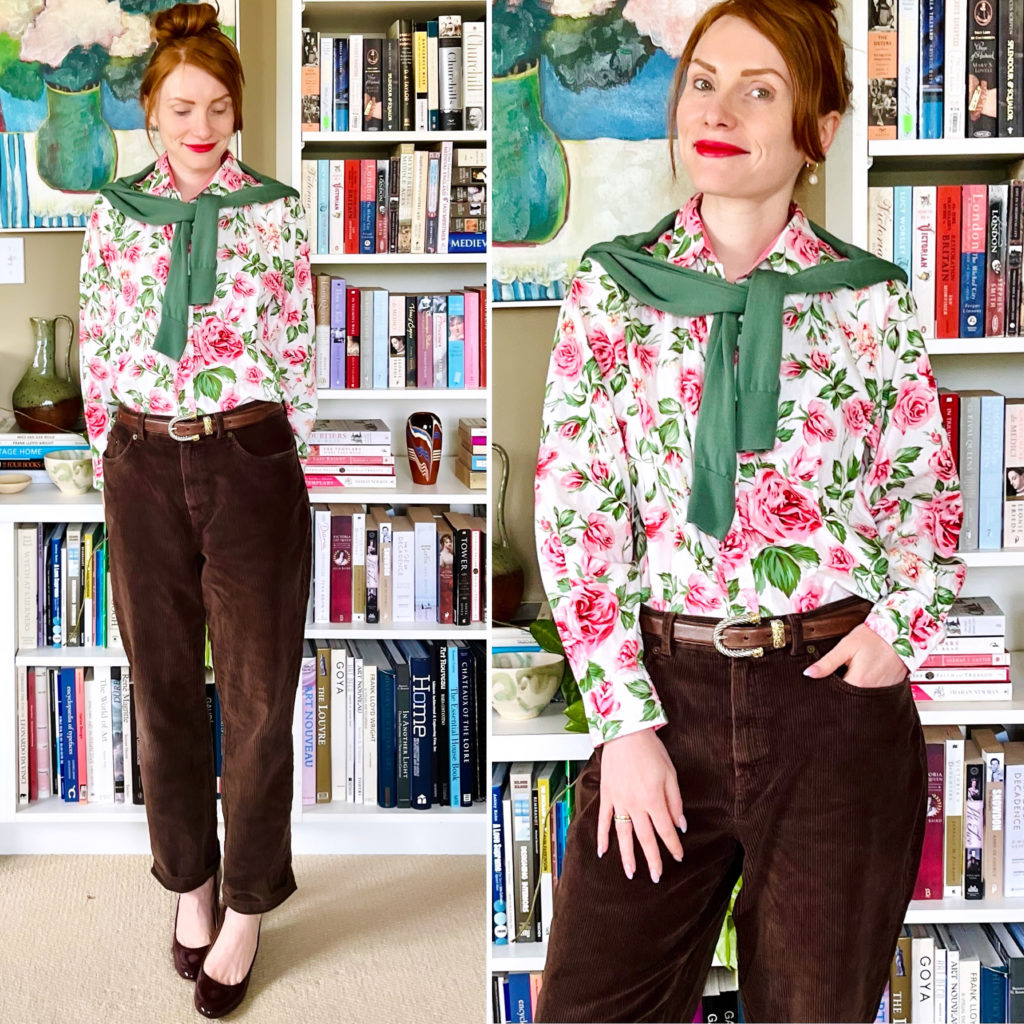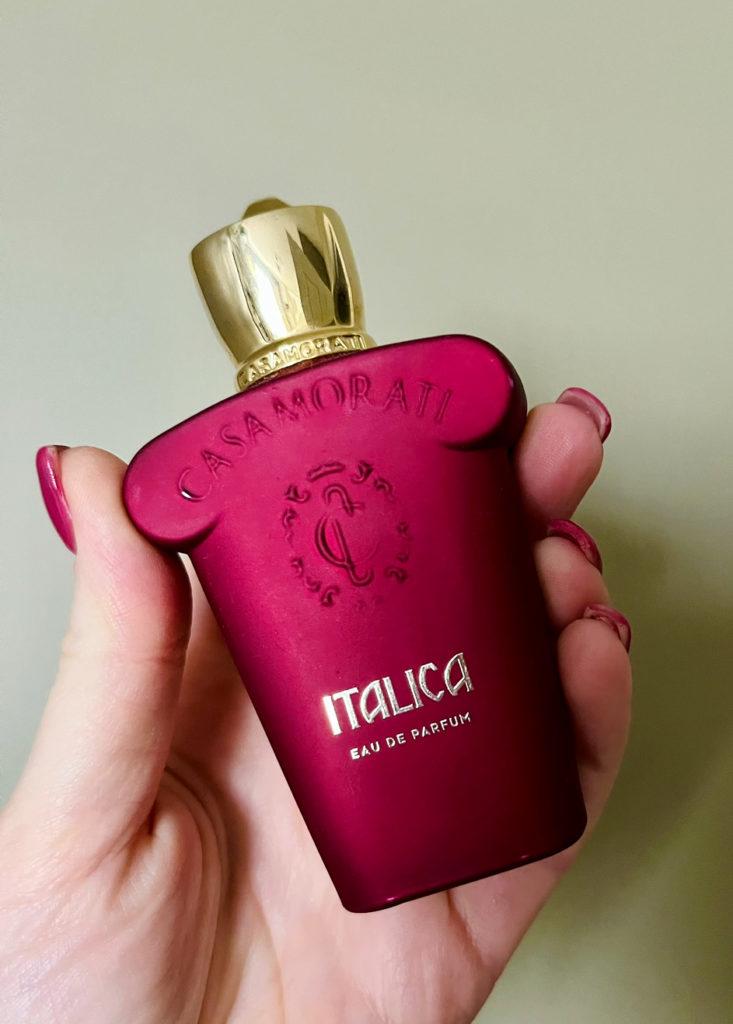Here’s the thing: I don’t love September. But there is at least one good thing about it and it’s this: September is the green light to start thinking about fall fashion and making some strategic wardrobe decisions. And while I might not love changing seasons for other reasons, I love the opportunity this brings to shake things up in my closet. Bring on sweater weather!!
As I write that, it’s currently 27 degrees Celsius, so I might be jumping the gun juuuust a little bit … but just let me have it, ok? Besides, as someone who thrifts her clothes, your girl needs extra time to prepare and plan for the future.
Now, that being said, I don’t actually see a lot of change on my sartorial horizon; Fall 2024 isn’t going to look all that different from Spring 2024 or even Fall 2023. Taking stock of my summer outfits, my current aesthetic mood is pretty obvious and might be best summed up as “the many faces of Ralph Lauren” with a side of 90s nostalgia. There’s the Ivy/prep thing, the prairie/cowgirl thing, the cottagecore thing, the English country thing — plus all the things I wanted to wear as a 90s teenager and didn’t the chance. And these are all things I continue to like, and which feel very much like the “me of now”. Obviously, there will be a pivot in terms of the interpretation of those inspirations to account for the change in weather, but the core ideas will be more or less the same. (Though I will probably put the prairie/cowgirl thing on the backburner once the weather dictates that my cowboy boots go into storage.)
Still, as you know, I do like to make little updates to my wardrobe every season to refresh the working material at my disposal for translating my aesthetic inspiration into actual outfits. I have a highly curated — and amazing!! — wardrobe, so this is an exercise in identifying specific pieces that will enhance the versatility of what I already own and allow me to put a fresh spin on my style, rather than a total overhaul. And I am feeling very excited and inspired for this exercise at the moment, though you might be surprised to hear why.
I recently fell down a Gen Z thrifting/fashion rabbit hole, and I don’t wanna get up.
OK, that probably requires a bit of explaining. Thanks to my IG algorithm, I’ve been consuming a lot of thrift haul content from Gen Z fashionistas/resellers — which, as a thrifter with a strong voyeuristic streak, is right up my alley — and let me tell you: these ladies are going ALL in with the Y2K fashion. I’ve been seeing clothes I haven’t thought about in decades. Getting some unpleasant flashbacks, but mostly I’m getting … lots of inspiration. Not in the sense that I am planning to start dressing like it’s 1999 and I’m a 19-year old university student; it’s a bit more complex than that. Seeing this generation’s take on 90s/Y2K style is making me see that fashion in a different light, with the added lens of my experience and knowledge as a 44-year old who lived through that era once already. It’s giving me a new appreciation for some things, reinforcing my lack of interest in other things, and sparking lots of ideas for how to remix my wardrobe.
I have said this before, and stand by it: sometimes, I get more inspiration from looking at personal style that is different from mine than I do from looking at a sartorial clone. You discover new things, and that is at the heart of creativity.
But I digress.
Seeing so much 90s and Y2K clothing on my social media feed lately has given me a ton of ideas about how I might update my current aesthetic with a bit of extra 90s flair. I have also seen a few fashion industry trend reports for Fall 2024, and while I always take those with a grain of salt — they’re just marketing for the capitalist agenda — I am intrigued by a few things I’m seeing, which have the potential to work really well for my style and my wardrobe.
So, without further ado, here’s what I am hoping to thrift into my (sartorial) life this fall.
Brown cowboy boots
Technically, this is a holdover from my summer thrift life that has yet to materialize, though it’s also an item I will keep wearing happily until there is snow on the ground. I have 2 pairs of black/grey cowboy boots that have been getting lots of wear this summer (seriously, I’m obsessed!) but I would like to have a brown option as well, because brown works better as a neutral with many of my outfits. Cowboy boots have been thin on the ground in thrift stores since earlier in the summer, and I don’t expect to see a lot of them as we head into fall and winter, but you never know. The bonus of finding them out-of-season is that they may end up being less expensive.
Black and ivory cap toe kitten heels
I like the very classic preppy vibes of this style of shoe, and I’m thinking that it might be a good addition to my shoe closet. I would prefer something with a low heel (or wedge) rather than ballet flats, and an almond toe rather than round toe. Basically, not a dupe of the traditional Chanel quilted cap-toe flats; I have a slightly different vibe in mind. I imagine them paired with jeans and a men’s shirt and a pearl necklace for a ‘laid-back elegance’ vibe. I think they would also work well with other pants in my wardrobe, but I’m less sure about skirts and dresses and that’s the main reason why I haven’t pulled the trigger on the pair I’ve been watching for a few months on Poshmark. Will I commit? Stay tuned.
Chunky platform Mary Janes
At the other end of the spectrum from the above, this is a pair of shoes that had been on my thrift list last year, and which I am now bringing back. I do have 2 pairs of platform loafers in my line-up, so this item is not a super high priority, but I would love to expand my 90s-inspired footwear options. I also think it’s a shoe that my daughter would enjoy borrowing … and, yes, we have reached that stage. *cue crying in where-did-my-little-baby-go* We are now basically sharing a closet, though I am putting down some boundaries, aka a “no go” zone around my favourite pieces. (Luckily, our taste in clothes does not completely align, so some of my stuff is safe … for the time being.)
Diamond tennis necklace
Not, like, real diamonds, ok? I would love a moissanite version or, more realistically, a good cubic zirconia one. Even some good quality vintage rhinestones will do. I have been wearing my tennis bracelet a lot this summer, and it recently struck me that the necklace version would be equally versatile. I have been looking at some options online, but this is an item I would prefer to buy in person after trying it out first. I’ve heard these types of necklaces have a tendency to flip over / not lie flat, and I want to check how one sits on me before I buy it.
Short pearl necklace
Same vibes as the tennis necklace, basically. I’ve been super into pearls lately, but rather than a long strand (which I already have), I want a choker-length one. Plot twist: I did find one! It took a few weeks to thrift something that met all my specifications, but Value Village came through — and I only paid $6 for it. I am warning you now: I will be leaning hard into the preppy vibe this fall.
Olive leather blazer
Apparently, olive is one of the “hot” neutrals this fall, and I became intrigued by it once I started to think of it as a brown-adjacent green. We all know how much I love brown! That being said, olive can be a tricky colour for me, so I am looking for a shade without too much of a yellow undertone. I specifically want to add some olive to my closet via a leather blazer because (a) coloured leather is also trending right now (though, frankly, it never goes out of style as far as I’m concerned) and (b) I love wearing leather in the fall. Leather is a wonderful textural contrast to the wool knits that form the backbone of my fall wardrobe. Here, I actually have a specific blazer in mind — it’s vintage Gap — but haven’t had any luck sourcing it yet. I am keeping my eye out for it, as well as other options; Danier is one of the brands at the top of my list when I’m on the hunt for leather jackets.
Brown leather blazer
Same explanation as above. As we already know, I love brown and wear a lot of it in the cooler seasons, so a brown leather blazer — similar to the black one I already have — would add versatility to my wardrobe. Plot twist #2: I found one! It’s a cool, slightly oversized, longline blazer cut, which will hopefully give me a lot of styling options to play with. It’s vintage and in mint condition, and at $20, it was a total steal. Something comparable at, say, Banana Republic would have set me back $300+. And that’s the reason why leather is one of the things I always try to find secondhand, if I can.
Suede vest / jacket
Suede is also hot this fall, and I’m here for it. Again, it’s the texture that gets me. Add a suede vest over a chambray shirt and then throw a chunky knit cardigan on top and you’ve got yourself a mix that would get a thumbs up from Papa Ralph. Apart from a vest, I am keeping my eyes open for other suede pieces including a fringed coat, a boxy cropped jacket, maybe even a pair of pants. Ideally, I want suede pieces in a warm whiskey brown, but I am open to other shades of brown, as well as other colours. Let’s see what the thrift gods send my way!
Leopard print skirt
I’ll put the spoiler upfront: I thrifted this already. Leopard print is, you guessed it, another hot trend this fall — though, let’s be honest, is it ever not? (Leopard, for fall? Groundbreaking.) Now, I am not a huge fan of animal prints, so I don’t own anything that is straight-up leopard; I have one skirt that features a bit of leopard print mixed in with paisley. I also usually don’t bother with it whenever it comes back into the trend cycle. But, for some reason, this year is different. This year, leopard print intrigues me. Well, the reason probably comes down to the same thing that explains most of this list: I like brown. This is a predominantly brown print. Mystery explained. Anyway, I don’t trust myself to truly commit to leopard print, so I decided to pick one item and use it as a test subject. After some deliberation, I decided that the item would be a skirt; I thought this would be the most versatile way for me to introduce leopard print into my wardrobe. As luck would have it, I was able to source a suitable skirt (pleated, midi) fairly quickly. I paid $5 for it, which is a good price point for something that may or may not end up being a long-term addition to my wardrobe. It’s a contemporary piece, so the quality is nothing to write home about, but it’s doing its job — allowing me to experiment with a new idea in a low-risk environment. So far, I’ve worn it a couple of times, and while the final verdict is still out, the early results are encouraging.
Chunky cropped cardigan(s)
I have a very specific silhouette in mind here: cropped and boxy, in a heavy/chunky knit. Cable knit would be nice, though I am not married to it. I think this would give me a good topper alternative to my wool blazers, and also some layering options with my leather jackets and other coats. My first priority is a cream or ivory cardigan, but I am also debating a mid- or dark brown one, and a dark red/maroon one. This might not sound like a difficult item to thrift, but I have very precise specifications (more so than what it might appear from what I’ve written) so I am not sure how long it will take me to find something suitable. Wish me luck!
That’s it for me, but I would love to hear what’s on your shopping list this fall. Share in the comments!

